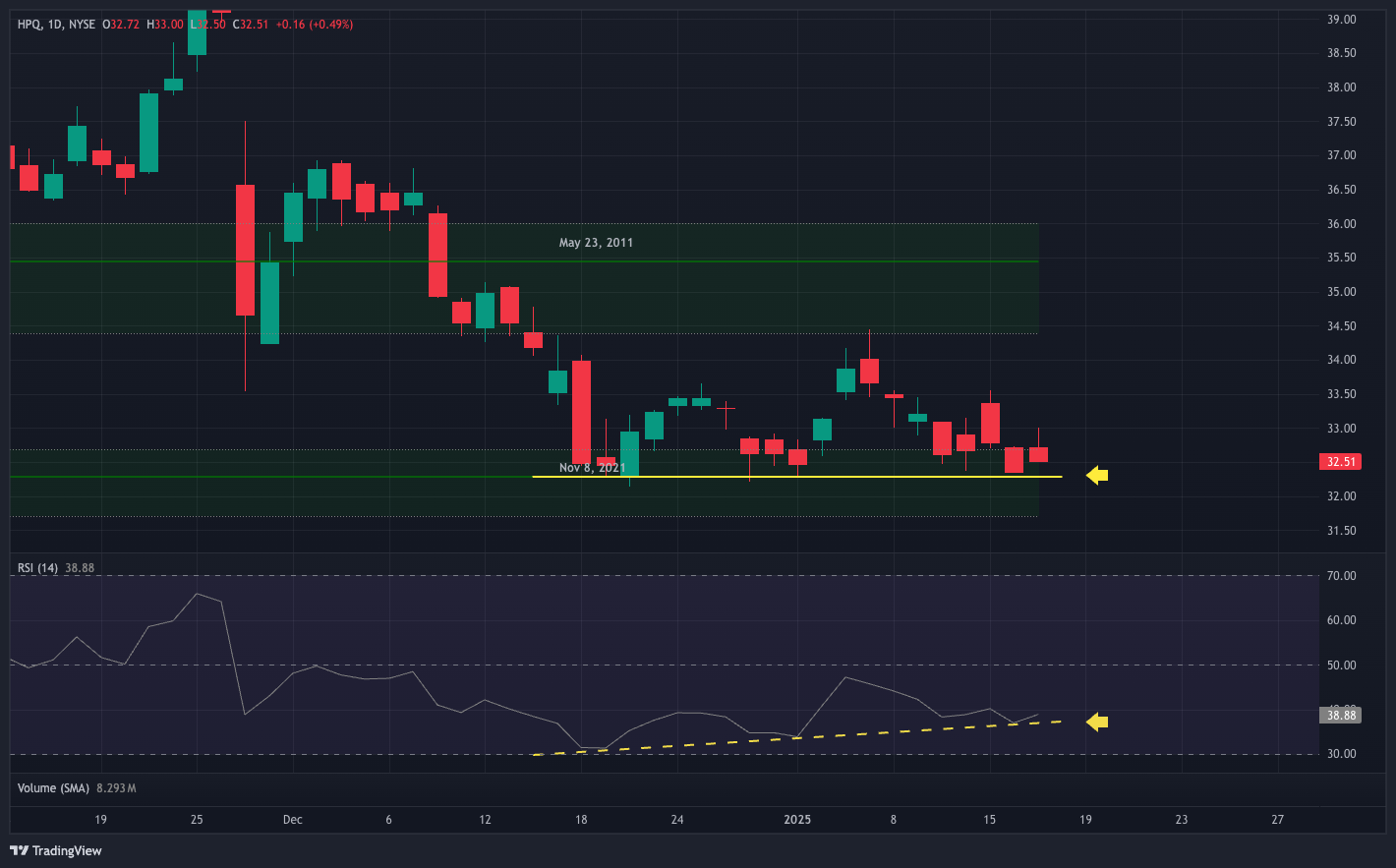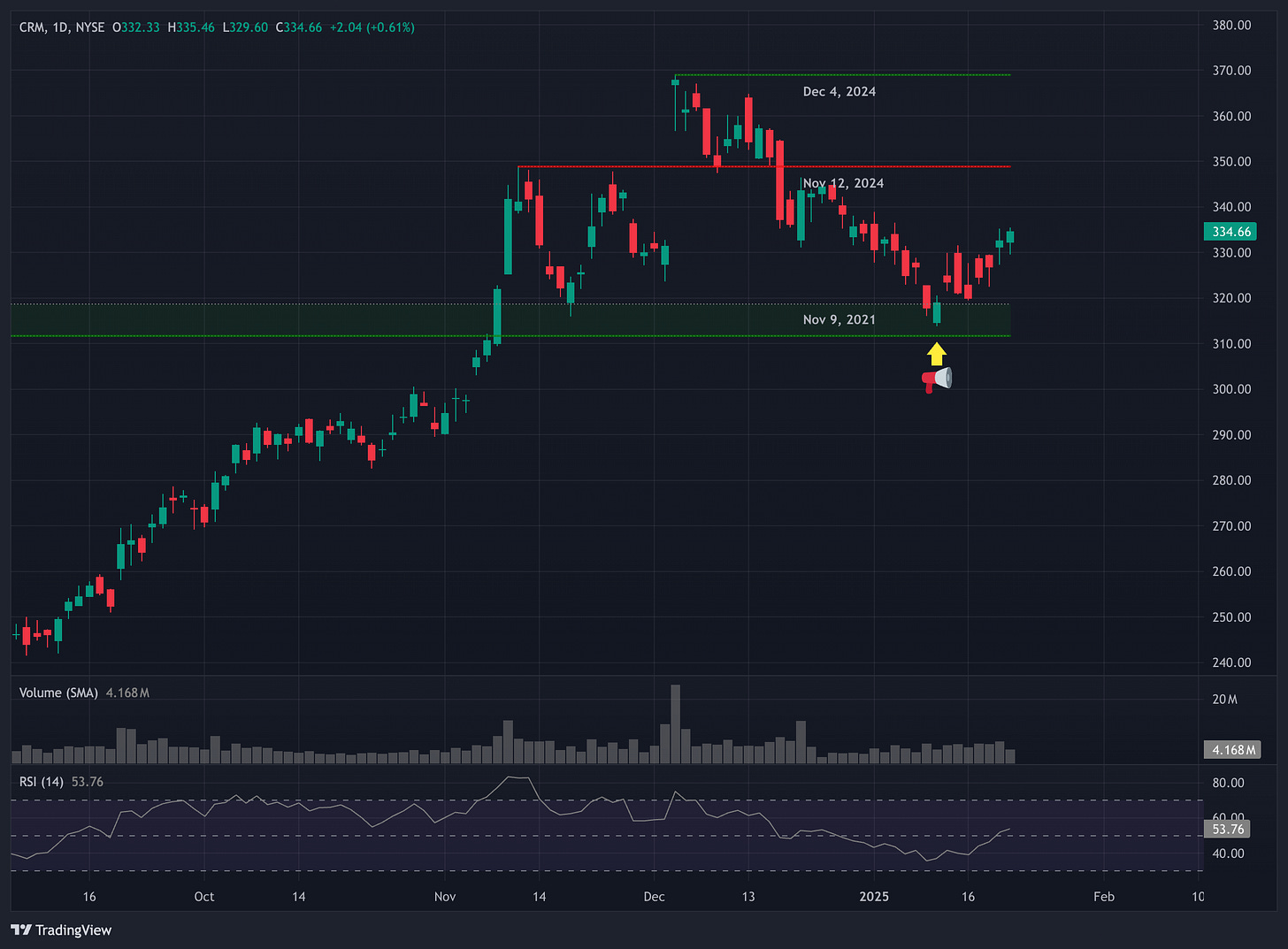Recapping past zones (24 Jan 2025)
A follow-up to our weekly zone alerts
Happy Friday everyone!
Another trading week is wrapping up, which means we’re back with our weekly analysis of the zones we’ve flagged in previous newsletters.
Now, normally, we let at least a week pass before recapping these zones—just to allow the action to play out first.
But this week has been especially twitchy.
So in this issue, we’re going to cover a couple of hot zones from just this past Tuesday, plus another one flagged a week before.
In case you’re new here, each week we highlight stocks nearing or entering Hot Zones, i.e. key levels on the charts with great risk-reward setups. Stay tuned and subscribe for future updates!
Check out our most recent zone alert:
Nike, Inc. (NKE)
Consumer Cyclical • Footwear & Accessories • USA • NYSE
Zone alert: January 21, 2025
Just last week, NKE was on the brink of breaking below its June 27 2018 zone. Hell, it had even breached the lower threshold of the zone—albeit not too convincingly.
Had there been a confirmation on Tuesday, it would’ve been a good shorting opportunity given its potential to dip all the way down to the Feb 2016 zone (where it landed the last time $70.8 was broken).
But, with most of the market riding the high of Inauguration Day, NKE managed to pull itself up.
It saw big gains on Tuesday, followed by another two decent green days on Wednesday and Thursday, leaving the stock up nearly 5%.
It’s now comfortably nestled at the base of the June 7 2018 zone, with RSI only in the 50s.
Let’s hope NKE still has its Alphaflys on because it’s still got some room to run here.
HP Inc. (HPQ)
Technology • Computer Hardware • USA • NYSE
Zone alert: January 21, 2025
HPQ caught our zone scanner’s attention because it was approaching a key support from November 2021.
It caught ours because it was showing something more—a bullish divergence emerging after the zone retests on December 19, January 2, and January 16.
Following that last retest, the stock has rebounded by roughly 3%.
We were looking at the May 2023 zone as the initial target for this move—but with recent volume not looking too convincing, the upper edge of the June 2011 zone could be a more reliable take-profit point.
Salesforce Inc. (CRM)
Technology • Software - Application • USA • NYSE
Zone alert: January 14, 2025
CRM was a stock we alerted in our January 14 newsletter.
It had just bounced off its November 2021 zone—one that served as a formidable resistance in the past, causing very significant pullbacks after reaching all-time highs.
Since then, CRM has climbed around 5%, and is still in the middle of its move towards our first potential target, which is the November 2024 zone.
Not the cleanest-looking bounce, but a bounce regardless.
Even this week, our zone algorithm spotted three additional opportunities with compelling risk-reward potential.
To get these delivered straight to your inbox weekly, subscribe to our newsletter:
“But wait… who are you people and what am I doing here?”
Welcome to Trading Places.
We’re just a bunch of market nerds, quants, and posers who’ve stared at enough charts we dump our portfolios at the sight of a menorah.
After years of convincing ourselves that the lines and shapes we were plotting actually meant something, we finally figured it was time to upgrade our shtick a tiny bit.
So now, we get quant intelligence to do it for us.
We built an algorithm that’s deaf to the market’s siren songs. It cuts through the BS and pinpoints Zones of interest, i.e. places on the chart where actual money comes to dance.
Think of it as a Limitless pill for your stock, currency, and crypto plays—scanning the markets in real-time and determining where the action’s at.
WTF are Zones, anyway?
Zones are key price levels where the market has reacted strongly in the past—such as sharp reversals or sudden swings.
They’re areas where actual supply and demand met in the past, and likely will meet again.
“Why are these significant?”
Well, it all comes down to three key principles. We like to call them The Principles of:
When I Dip, You Dip, We Dip (aka psychology)
Traders are aware that others are watching these levels (zones) too. With everybody paying attention, this creates a self-fulfilling prophecy where everybody acts in anticipation of everybody else’s actions.
Markets Gonna Market ¯\_(ツ)_/¯ (aka technical factors)
If the first price rejection at the top of a zone was violent, it’s likely that buyers who entered at that level are now holding losses.
But with each retest, the rejection weakens, as there are fewer buyers remaining underwater. This weakens that resistance (or support for all you short-sellers), and could eventually lead to a break through.
Killer Whales (aka institutional plays)
Big players need liquidity in order to place massive orders without moving the market against themselves. So they wait for these zones, knowing a lot of us small fry (retail traders) will come to play.
This allows them to buy low or sell high without causing a lot of waves.
Remember: Zones are NOT guarantees but rather regions of increased probability for market moves. So always, ALWAYS use proper risk management.
Trading Places: Launch coming soon!
Stop obsessively refreshing your charts like it’s your ex’s Instagram.
By combining historical patterns with real-time market data, Trading Places identifies zones and assigns probabilities to each one—helping traders spot potential plays with higher chances of success.
It automates all of the curation, chart-plotting, and alerting for you, so you can actually have a life (or at least pretend to)!
Stay tuned!
Disclaimer: This isn't financial advice. This shouldn’t be news to you.








